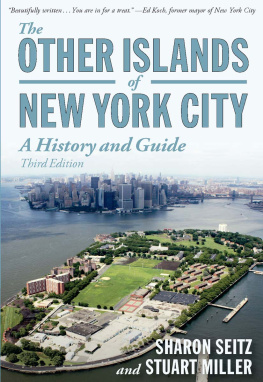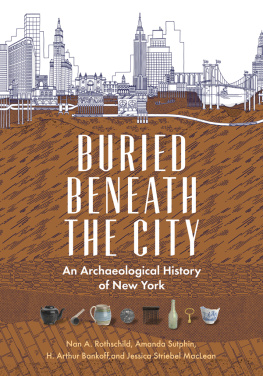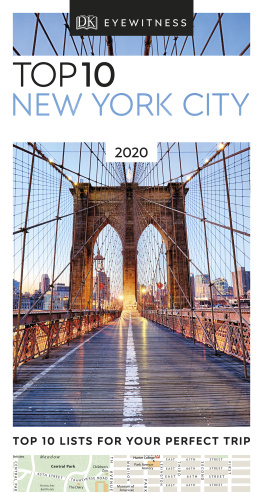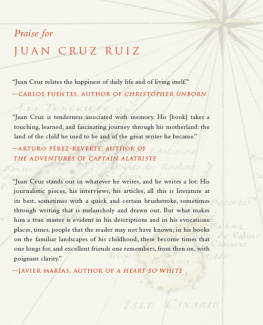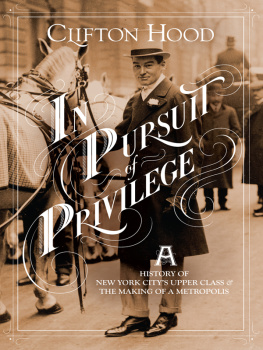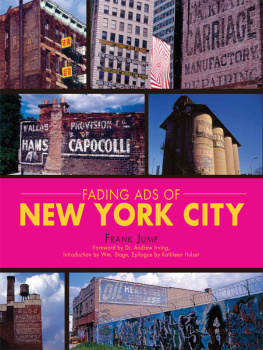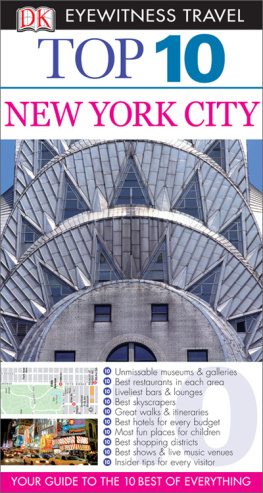To SGS, for putting up with another one of my crazy plans and going through this all over again.
To all those who have encouraged me on my journey thus farand to Rattsu.
Introduction to the Third Edition
TAKE THE A TRAIN . And be sure to get a window seat, because after the train emerges from the dark subway tunnels of Manhattan and Brooklyn and onto the elevated lines of Queens, the hard-edged cityscape slowly vanishes. Outside your urban porthole, commercial strips beneath the tracks fade into private homes; then the entire landscape melts into an aquatic tableau dotted with boats out for a day of fishing. White-rumped sandpipers, American oystercatchers, and common snipes congregate in marshes and wetlands. Then the subway stops, and its double doors slide open, revealing a weathered fishing village where houses are built on stilts. For the price of a subway ride, youve traveled worlds away from the steamy city in the distance.
You have just entered one of New York Citys other islands.
Broad Channel, home of the Jamaica Bay Wildlife Refuge and a modest community, is one of dozens of islands within the confines of New York City, a metropolis where even the mainland is an island. Manhattan, Staten Island, Queens, and Brooklyn are all either single islands or geographically part of Long Island; only the Bronx is connected to the contiguous United States.
New Yorks true archipelago, however, resides in its rivers, bays, and other waterways. Some of the citys islands are famous, like Ellis Island, some obscure, like North Brother, and some, like Coney Island, are island has-beens. From Rat Island, a tiny two-acre speck in the Bronx, to Rikers Island, a sprawling penal colony in Queens, the islands of New York City were long forgotten pieces in the citys geographic jigsaw puzzle.
New York Citys smaller islands are our secret treasures, says Mayor Michael Bloomberg.
New Yorks islands were formed by glacial erosion, most of which occurred twelve to eighteen thousand years ago. As glaciers slowly flowed south, they carved channels in the regions rocky terrain; some sections were so hard that they werent ground down. When the glaciers melted, they filled in the channels between the landmasses, leaving the hard knobs jutting out as islands.
The isolation unique to islands has endowed them with special purpose and an evocative aura throughout history: from Napoleons banishment to St. Helena after Waterloo and Charles Darwins evolutionary theories cultivated in the seclusion of the Galapagos Islands, to the swashbuckling drama of Treasure Island and the slapstick comedy of Gilligans Island . Islands are at once forlorn, mysterious, and seductive. Whats so fascinating about islands is that theyre just out of reach, says New York historian Joyce Gold.
But the remoteness that fires the imagination also relegates many islands to the recesses of the mindWoody Guthrie never looked beyond Manhattan when he composed his classic lines: This land is your land, this land is my land, from California to the New York Island. Even with the benefit of growing up in New York, we too were guilty of the same myopia, having overlooked the citys vast network of islands for years.
Finally, in 1990, while at Columbia Universitys Graduate School of Journalism, Sharon investigated the curious, often derogatory stories shed heard as a child in Cypress Hills about the cloistered community of Broad Channel. Her award-winning masters thesis revealed a proud neighborhood of activists determined to safeguard their island hamlet in the face of continuous adversity.
After visiting Ellis Island two years later with Stuarts familywhose roots traced back through the immigrant depotwe chatted casually about the contrast between the Island of Hope and Broad Channel. Thinking wed stumbled upon a magazine story, we explored further and discovered an entire galaxy of islands, many with a crucial role in New York Citys development.
Born a great port city, New York gradually shed its maritime identity as it evolved into a sprawling megalopolis and center for manufacturing, finance, and culture. As New York embraced the modern erabuilding bridges and tunnels to speed the flow of commerce, and highways like the FDR Drive and the Belt Parkway that cut its citizenry off from the waterfrontits identity as a city of islands diminished.
Many of the citys islands also followed a general pattern of development: Family farms of wealthy merchants were replaced first by forts, then by oppressive government institutions and garbage dumps, and at last by recreational centers and wildlife preserves. According to Russell Gilmore, author of Forts of New York City , the islands most critical role came during their fort phase as defenders of Americas independence. In the years leading up to the War of 1812 with England, the U.S. government erected a comprehensive defense to protect New York. The outer bastions were on the Brooklyn and Staten Island shores and aimed at The Narrows, while the interior defense was constructed at Castle Clinton and Ellis, Bedloes, and Governors Islands. While the English invaded and burned Washington, D.C., during the war, their navy, which blockaded New York City, was deterred from entering the harbor. The island forts never had to fire a shot.
By 1820, New York claimed 123,706 inhabitants, surpassing Philadelphia as the most populous city. The number soared to 813,669 by 1860; a quarter of the newcomers were Irish immigrants. A similar boom occurred throughout the rest of the nation, bringing with it an increase in crime and poverty and stirring fears that Americas church, family, and social order were in jeopardy. The government, which was run by a handful of wealthy men, turned to newly developed institutions, like the asylum and the prison, to keep the underclass in check. To maximize segregation, municipalities nationwide routinely placed institutions well outside the city limits; for its part, New York City bought up islands, which were nearby, yet isolated. Between 1828 and 1892, the government turned first to Blackwells Island, then to Randalls, Wards, Hart, North Brother, Rikers, and Ellis Islands for warehousing the sick, criminal, indigent, and immigrant. Hoffman and Swinburne Islands were built from scratch as quarantines to pacify citizens opposed to a quarantine on Staten Island.

